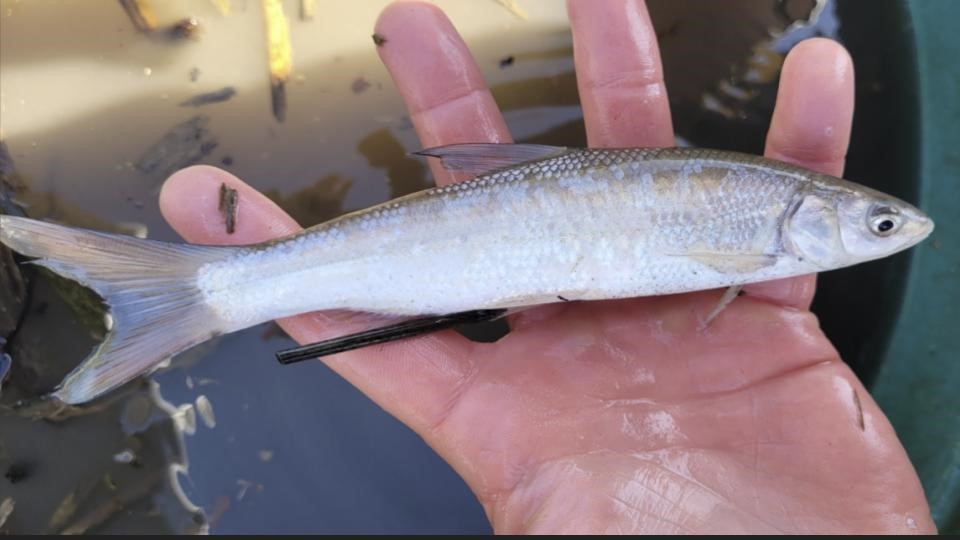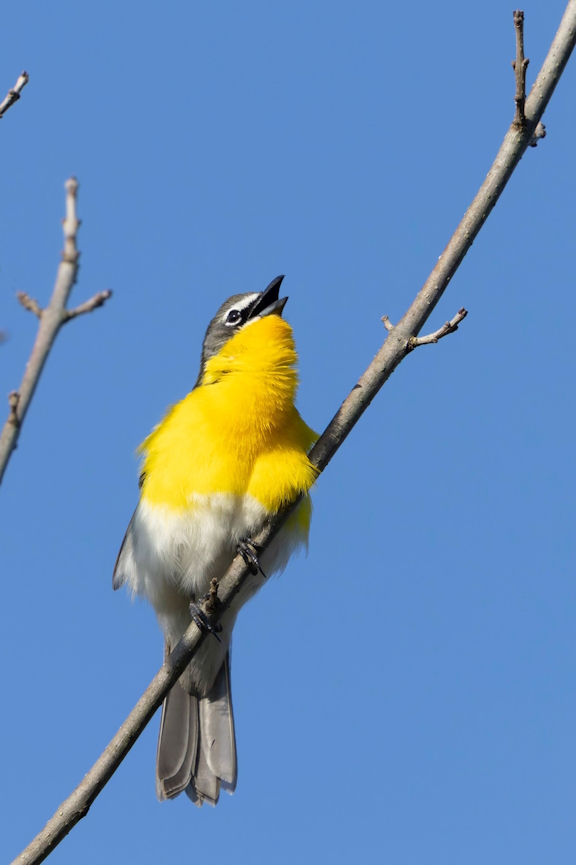A New Habitat Project in the South Yolo Bypass

Sacramento Splittail ©Konshau Duman

Yellow-breasted Chat ©Ann Brice
The southernmost edge of our county, along dirt roads into the Yolo Bypass, is a place birders seldom visit. A mix of marsh, rice fields, and winter-flooded grassland and shrubland, it is nearly all private property. The California Department of Water Resources, in an effort to help the recovery of native fishes, has been digging shallow channels on several Delta islands to restore them to tidally-influenced wetlands. The wetlands are meant to provide a home for native fishes, including juvenile salmon that make their way into and down the Yolo Bypass during wintertime high water in the Sacramento River. The same wetlands would also grow tiny crustaceans called water fleas that would wash out of the channels into the larger Delta waterways, where they would be available as food for migrating salmon and other fishes.
One such project, called Tide’s End, incorporates 1180 acres near Roads 155 and 107 where the land cover is now in duck clubs and rice fields. Ownership has changed to prepare for the new uses. In August, three of us YBA board members were graciously invited on a tour of the site with the project leads from the company that is designing the wetlands, Ecosystem Investment Partners (EIP). EIP has recently finished a similar project just south of Tide’s End in Solano County, called Lookout Slough.
We wanted to know what the project could do for birds, and the answer seems to be that it has plenty of potential. There would be wetlands managed to grow food for waterfowl. The grasslands could be managed to better support grasshopper sparrow, a rare bird in Yolo County that has declined here and elsewhere in the Valley in recent years. If the floodplain shrubland expands enough, it might attract nesting yellow warbler and yellow-breasted chat, species that are also much less common in the Valley than formerly. There is decent burrowing owl habitat on the site that could be improved with the addition of (artificial) nest burrows and maintenance of bare ground and short vegetation.
Proper timing of flooding in the grassland could provide mudflats and shallow ponds for shorebirds in late summer and fall, the season when their habitat is both crucial and scarce. A similar property nearby hosted lots of shorebirds when flooded earlier this fall. I should note that this is primarily a fish habitat and fish food project and the amount of management for various birds is not yet settled.
While public visitation – especially by birders – will be highly desirable when the project is complete, the remoteness of the site makes it fraught with issues of trespass and vandalism, among others. We would need an entity to supervise visits. The property lies near the south edge of the Yolo Bypass Wildlife Area, which has been well managed for birds and birders recently. Perhaps the acreage could become a new unit of the Wildlife Area. Another possibility is for Department of Fish and Wildlife oversight to be supplemented with help from the Yolo Basin Foundation, with its extensive experience in managing public outreach and access. And there could be a role for YBA.
EIP has invited us back in spring to see progress on the project. We look forward to it.
–Michael Perrone, Conservation Chair
